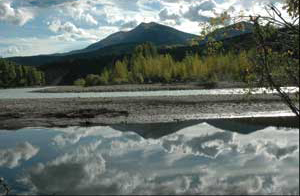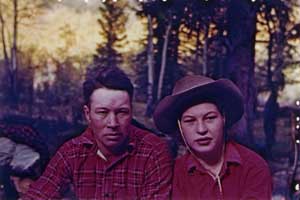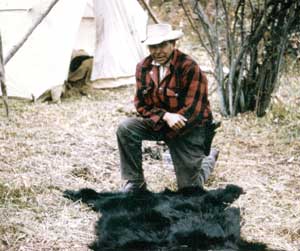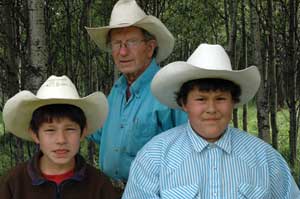The Mountain Métis is a community of people who have a rich history of land management— trapping, guiding and outfitting.
The Mountain Métis have over 200 years of wildlife and wilderness management skills..During the 1950s, many lobbied Norman Willmore to protect the eastern slopes, which resulted in the Willmore Wilderness Act.
This sophisticated mountain society has been successful in protecting this 4500 sq kilometres of mountain wilderness because of foresight and activism.CENSUS’
The 1872 and 1906 Census provides a glimpse of the community at Jasper House in 1872 and in 1906.
The Province of Alberta Records of the Jasper House 1872 Census shows the following population:
- Shuswap -17 men, 14 women, 40 children
- French Halfbreeds – 30 men, 30 women, 150 children
- English Halfbreeds – 0 men, 0 women, 0 children
- Whites – 0 men, 0 women, 0 children
- Total Jasper House Population – 47 men, 44 women, 190 children
The Manitoba, Saskatchewan and Alberta 1906 Canada Census details 196 people living in Jasper, the year after Alberta was made a Province. There were 115 newcomers who increased Jasper’s population, as they were working on the newly constructed railroad that was being pushed through the Yellowhead pass. The census included 81 Metis descendants of the original Coureur de Bois, Voyageurs, Northwest Company and Hudson Bay Factors. The men and women who helped open Canada—coast to coast. The families included:
- Adam Joachim (28) and four family members; 13 head of horses
- Isadore Findlay (34) and four family members; 9 head of horses
- Louis Karakuntie (30); 2 horses
- Baptist Gauchier (28) and four family members; 8 head of horses
- Paul Gauchier (26) and three family members; 9 head of horses
- Ewan (Henry) Moberly (46) and nine family members including Adolphus Moberly and William (Bill) Moberly.
- John Moberly (46) and six family members; 15 head of horses
- Martin Joachim (30) and seven family members; 8 head of horses
- Louis Swift (50) and four family members; 24 head of horses
- Albert Norris (12)
- John Findlay (28) and two family members; 9 head of horses
- Mary Gauchier (60) and son; 4 head of horses
- Albert Gauchier (24) and two family members; 7 head of horses
- Adam Cardinal (32) and wife
- Angelique Tappe (40)
- John Gregg (48) and four family members
- Vincent (Basa) Wanyandie (48), wife Isabella (40), son Daniel (17) and four other family members; 18 head of horses
- Henry Kenny (44) and five family members; 5 head of horses
- Mary Cardinal (65)
Several families packed up and left the Athabasca valley prior to 1906, after the Canadian government threatened to turn their homesteads into a National Park. This was the land that their families had lived on for more than 100 years. Seven families held out hoping to remain:
“In 1910, shortly after the boundaries of Jasper National Park had been established, J.J. Maclaggan came from Ottawa to buy out claims of residents who had homes in the Jasper area. The families included Lewis Swift, the four Moberlys: Ewan, John, Adolphus, William (Bill), as well as Isadore Findlay and Adam Joachim.” (Quote from “Overland by the Yellowhead” by James MacGregor.)
All of the families evicted from Jasper were Métis and, in some cases, had inhabited the Athabasca Valley for close to a century. Many of these mixed bloods had legendary forefathers who were unsung heroes of the Canadian fur trade, some of which were Alberta’s first businessmen known as free traders, ‘otipemisiwak’. Several documents refer to these mixed mountain families as ‘Iroquois halfbreeds’, or the ‘Iroquois Métis’ We share an historical account of the descendants of the fur trade who have over 200 years of wildlife and wilderness management on Alberta’s eastern slopes.







